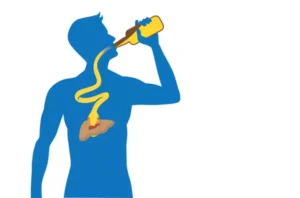This slow tapering also helps ease the discomfort you may feel as you stop taking opioids. During this time, you can practice new skills to manage pain and other long-term symptoms too. Your healthcare professional may prescribe opioids to help you get through a few days of severe pain after surgery or a serious injury. Opioid medicines also can play an important role in treating pain from cancer.

Case study: The Hong Kong Methadone Maintenance Program
Continuity of maintenance treatment between prison and community settings is critical to reducing the risk of relapse to drug use and criminal re-offending. Patients who have recently used opioids can be given a first dose at the higher end of this range. The first dose given to a patient who has not recently used opioids should be no greater than 10–20mg. When determining the size of the first dose, keep in mind that deaths from methadone overdose in the first two weeks of treatment have occurred at doses as low as 40–60mg per day. If you have been using a short-acting opioid, acute opioid withdrawal lasts 4 to 10 days, with withdrawal symptoms starting 8 to 24 hours after last use. One of the biggest risks during withdrawal is the possibility of relapse and potentially life-threatening overdose.
Tapering off opioids: When and how
- If you find yourself having difficulty during your taper, support from others can be very helpful.
- This is called tolerance, and it can happen with any opioid.
- This is to make sure that the dose you take is right for you.
Studies show fear of withdrawal symptoms is a major reason why people keep using opioids. If you have opioid use disorder, receiving treatment for withdrawal symptoms may be the first step toward recovery. If you find yourself having difficulty during your taper, support from others can be very helpful. If you and your healthcare professional think you have an opioid use disorder, voluntary groups such as Narcotics Anonymous are structured support groups.

Methadone Withdrawal Symptoms and Timeline
- It’s possible for some people to become addicted to methadone as they use it to wean themselves off of another prescription painkiller.
- Anyone can buy naloxone from a pharmacy or local health department.
- Patients should be offered psychological care to address these symptoms.
Methadone detox is safest and most efficient when completed in a drug treatment facility or hospital. Methadone is a prescription drug that a person should only use under the supervision of a doctor or another medical professional. Most methadone clinics offer some sort of counseling, so that’s a good place to start. Although the laws about opioid abuse during pregnancy do differ among the states, methadone is safe and legal. You should not run into any problems when you seek treatment. It’s important to keep in touch with both an obstetrician (OBGYN) and an opioid use disorder specialist throughout your pregnancy.

The U.S. Drug Enforcement Administration (DEA) publishes that nearly 2.5 million people in the United States in 2012 reported misusing methadone at least once in their lives. Methadone abuse can increase dependence, and this is further amplified if the drug is taken in a manner other methadone withdrawal than as intended. Methadone is designed to be taken by mouth, ingested orally, and metabolized through the gastrointestinal system. If methadone is injected, snorted, or smoked instead, the drug enters the bloodstream differently and is therefore metabolized differently as well.

Who can and cannot take methadone
- Dosing should be conducted by nurses or other health professionals under the supervision of nurses.
- Generally, benzodiazepine withdrawal symptoms fluctuate; the intensity of the symptoms does not decrease in a steady fashion as is the case with most other drug withdrawal syndromes.
- To reduce the risk of relapse, patients should be engaged in psychosocial interventions such as described later in these guidelines.
- The patient should commence psychosocial treatment as described in these guidelines.


